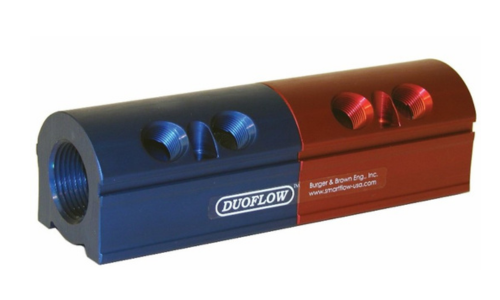
Faster Changeovers, Higher Profitability
In the fast-paced world of plastics processing, every minute counts. Long mold changeovers not only slow production but also reduce available machine time and impact overall profitability. Shortening changeover times—often referred to as SMED (Single-Minute Exchange of Dies) in lean manufacturing—can dramatically improve OEE, throughput, and ROI.
So how do you start? The first step is to establish a baseline with a time study that breaks down your current changeover process into measurable elements. From there, you can pinpoint where improvements will have the most impact.
Why Quick Changeovers Matter
- Increased Flexibility: The ability to run smaller lot sizes with shorter lead times.
- Reduced Downtime: More time producing parts, less time waiting for machines to be ready.
- Better ROI: Faster setups mean higher utilization of expensive molding equipment.
- Improved Morale & Safety: Well-defined and efficient procedures reduce stress on technicians and lower the chance of errors.
Conducting a Time Study
A time study is the foundation for identifying inefficiencies in mold changeovers. Here’s how to approach it:
1. Document the Process
- Record a full mold change from the last shot to the first good shot.
- Use video when possible—it allows you to review steps in detail.
2. Break Down Activities
Categorize each action into:
- Internal: Tasks that can only be done when the machine is stopped (e.g., loosening tie-bar nuts, removing water lines).
- External: Tasks that can be done while the machine is running (e.g., staging the next mold, pre-heating, preparing tools).
3. Measure Each Step
- Record the time for every task.
- Note delays, bottlenecks, or duplicated efforts.
4. Identify Waste
Look for:
- Waiting time (searching for tools, waiting on forklift availability).
- Unnecessary motion (extra walking, lifting without assistance).
- Rework or trial-and-error (multiple start-ups to achieve good parts).
5. Analyze & Prioritize
- Highlight the longest and most variable tasks.
- Focus improvement efforts on internal tasks that can be moved to external, or steps that can be standardized or automated.
Prime Areas for Improvement
Once the study is complete, the following areas typically yield the fastest improvements:
- Tooling & Connections
- Quick-disconnect water and hydraulic fittings (e.g., Smartflow or EAS couplers).
- Smartflow Duomanifolds allow operators to connect both supply and return lines simultaneously, dramatically reducing water hook-up time and minimizing the risk of errors.
- Standardized connection layouts for consistency across molds.

SMARTFLOW MOLD MOUNTED DUOFLOW MANIFOLD
- Staging & Preparation
- Pre-heating molds to minimize startup scrap.
- Staging cranes, carts, and clamps before machine stoppage.
- Standard Work & Training
- Documented step-by-step changeover procedures.
- Cross-training staff to ensure consistent execution.
- Automation & Assist Equipment
- Automatic clamping systems.
- Mold handling equipment to reduce manual lifting and speed positioning.
Turning Data into Action
A time study not only shows where time is lost but also provides a baseline to measure progress. Set clear targets for reduction (e.g., 20% faster changeovers within 6 months), implement changes, and repeat the time study to validate improvements.
Final Thoughts
Quick mold changeovers are not just about speed – they’re about consistency, safety, and efficiency. By using a structured time study, you can identify the bottlenecks in your process and implement targeted solutions that pay back quickly in higher machine availability and greater flexibility.
Remember: Every saved minute of downtime is a gained minute of production.
